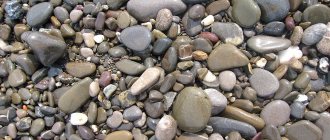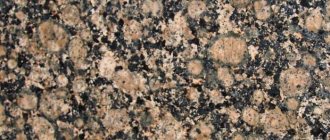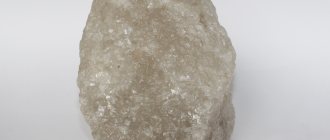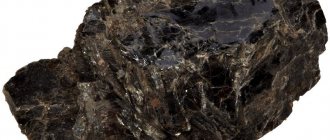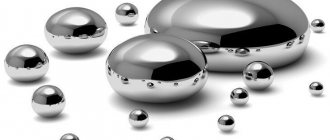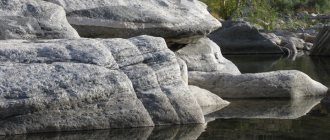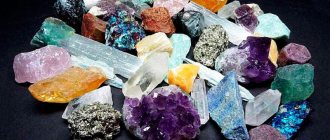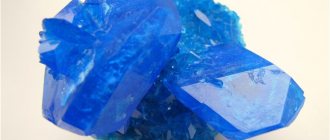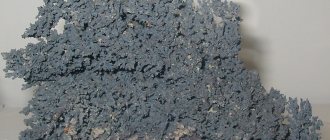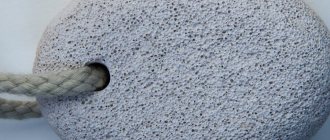"Royal Stone" offers wholesale and retail river and sea pebbles of various colors and sizes. Order a stone from us!
Pebbles are rock fragments that have a rounded shape and are formed naturally under the influence of water and wind.
The process of pebble formation can take from ten to hundreds of years. This stone is used as a raw material for construction finishing works, and also as a decorative material. Current technologies make it possible to produce pebbles of various sizes, shapes and colors on an industrial scale.
Pebbles are formed from marble, granite, gypsum, and various types of sandstone. The artificial version of this stone is very similar in appearance, pattern and color to the natural one, but its cost is usually lower.
What are pebbles?
It is a round stone, ranging in size from 1 to 15 centimeters. Typically flattened, with slight indentations or bulges, but no sharp parts. Depending on the rock, it can be of different colors: white, brown, yellow, gray, etc.
Larger rounded fragments are called cobblestones, boulders, and a layer or many pebbles with an admixture of clay, sand, and silt are called pebbles. Unlike gravel or crushed stone, it is smoother, with smooth shapes and a uniform composition.
Guide to Sochi pebbles: Gneisses, quartzites, basalts and golden sand
In addition to standard basalts and limestones, corn cobs and dead jellyfish, the Sochi surf can bring semi-precious stones to your feet - red and yellow jaspers. Red, hematite ones enter the sea from the upper reaches of the Mzymta, yellow ones - along Sochinka from the Plastunsky highlands. In the 30s of the last century, gold was panned on the coastline within the city limits - a whole team worked. In the second half of the twentieth century, the mines were closed as unprofitable, but the fact remains that if in the village of Magnituri near Batumi people bask on healing magnetic sand, then in Sochi they bask on gold.
SCAPP asked geologist Alexander Trenbach to select and label rock samples from common Black Sea pebbles on one of the city's typical beaches. The educational scientific laboratory assisted in a more detailed study of the samples and obtaining images from a digital microscope.
Limestone
This sedimentary rock is fine-grained; depending on the impurities, the stone can be pink, white, or gray, sometimes black, red, or even yellowish. It is widely used in construction, the chemical industry - lime is obtained from limestone, and in general it is a very useful material for agriculture, metallurgy and other industries.
Sandstone
Another sedimentary rock popular at the seaside, granular and cemented, is considered a frequent companion of gold. Due to impurities it can be yellowish, brown, black and green. Used mainly in construction. The largest sandstone deposit in Sochi is located in the village of Soloniki, where quarrying is underway.
Mudstones and siltstones
Rocks that are intermediate between clays and sandstones. Dense, layered, suitable for the production of expanded clay, which, by the way, is also produced in Sochi, at the building materials plant. Mudstones are gray. Siltstones can be gray, black, green and red.
Gravelite and conglomerate
Sedimentary rocks made of large particles of various origins cemented by clay or other materials. Durable stones are used as building material.
Roofing slate
Sedimentary, clayey rock that can be easily split into fairly strong and thin layers of 3–5 cm. In Sochi, in the upper reaches of the Mzymta, a shale mine operated for the extraction of natural tiles, an environmentally friendly and reliable material.
Gneisses
Vacationers’ favorite stones for creating monumental inscriptions on beaches like “Barnaul 2016” or “Lucy + Ashot”. It is a metamorphic rock formed from sandstones interspersed with silvery particles of muscovite. It looks very nice and is used in construction, although it does not have the same strength as granite.
Granites
Granites of various shades are often found on city beaches. They are brought ashore by the Mzymta and Shakhe rivers. This is an igneous rock consisting of quartz (up to 30%), feldspars, amphiboles and micas. Strong and durable material for construction and cladding of buildings, embankments and bridges.
Diorites and andesites
Diorites and andesites are igneous rocks in which the quartz content is 10–15%. The rest of the mass is amphiboles, potassium feldspars and plagioclases. Suitable for construction purposes.
Gabbro and basalts
These rocks are of igneous origin. They consist of pyroxenes, to a lesser extent amphiboles, plagioclases and feldspars. There is no quartz in these rocks. White inclusions in basalts are represented by zeolites.
Quartzite
A metamorphic rock consisting of almost one mineral - quartz. Durable and hard, resistant to all types of weathering, used for cladding and the production of refractory bricks. Quartz is a widespread mineral found in many rocks and, in its monomineral form, in quartz veins. The color is mainly water-gray, white to translucent. It has a fairly high hardness (7 on the Mohs scale. The maximum is 10 for diamond), and is resistant to physical and chemical weathering. Transparent and crystalline quartz are of collectible and jewelry value (rock crystal, morion, roguetopaz, jasper, etc.).
Origin of the stone
In nature, it is formed from fragments of various rocks, which for a long time are exposed to water, wind, and friction against each other. Peeling occurs on the bottom, banks of rivers or seas, so pebbles can be sea or river. Sea water is usually flatter than rocks formed on the river bottom. The process can take hundreds of years.
Imitation of pebbles is done using special equipment. Rocks extracted from quarries are crushed into fragments, calibrated, and then tumbled in tumbling machines. To achieve higher decorative qualities, stones can be additionally polished and painted.
What are the names of decorative stones?
Glass imitation sea pebbles (marbles) - pebbles
for a variety of types
of decor
. They can be used in floristry, making panels, bell miniatures, etc.
Interesting materials:
How to preserve garlic longer at home? How should the sign be positioned according to GOST? How should a healthy heart beat? How should the name of the organization be indicated? How should vacation pay be paid? How to finish baking charlotte? How to reconnect Beeline Kazakhstan tariff ahead of schedule? How to get audio from WhatsApp? How to travel on the subway with a dog? How to clean up after your dog in an environmentally friendly way?
Types of pebbles
Classification by origin and place of production:
- channel - in the riverbed;
- coastal - on the shore (beach);
- river - formed mainly from granite, quartzite, gray, white and black colors predominate;
- marine - the composition may include granite, slate, basalt, shell rock, quartzite, flint (primary colors: white, beige, red, gray - plain or variegated, with veins).
Artificial pebbles are made by man. It is made from granite, marble, dolomite, goldite and other minerals.
Types by size:
- small - up to 2.5 cm;
- average - up to 5 cm;
- large - up to 15 cm.
Types of pebbles:
- Washed. Purified from salts, sand, silt and other elements. It is more convenient to use, as it quickly sets with adhesives.
- Caspian. Formed from sedimentary rocks. Flat, low specific gravity, predominantly sandy in color, but may be lighter or brown.
- Flint. Silicon perfectly purifies water from microbes, oil products, phenols and other harmful substances, therefore it is used for filtration in wells and reservoirs.
- Black. In production, it is made of dolomite or marble, and after polishing, it is polished and coated with a composition that gives a glossy shine.
- Glass. Made from glass. Allows you to create a bright design in the interior or landscape.
- Decorative. It is made from granite, marble chips and gypsum. You can make stones of different colors, sizes and shapes. Widely used in decorative finishing of premises and gardens.
- White. Round or oblong shape, often used in landscape design to design artificial ponds, paths, and flower beds. It is mined mainly in the Caucasus.
- Granite. Granite lends itself well to processing, so it produces smooth, rounded stones of various sizes. The breed is very durable, resistant to mechanical stress and retains its original appearance for a long time.
- On a substrate. The elements are fixed to the mesh, which greatly simplifies installation.
Small stones are usually used to decorate walls and crafts, and large stones are used to decorate the garden and local area.
creative aquarium
It is best to make fish from small oblong stones. Having made several pieces of different sizes, types and colors, you can organize an original decorative “aquarium” from a suitable box, adding large “boulders” and “sea grass” from threads or colored paper to the composition.
Another option is to “launch” our “fish” into a real aquarium with water as decorative elements (you will need to take care of indelible paint and reliable materials for decoration).
So, let's make fish. As usual, wash and dry the stones. Using a simple pencil, mark the contours of the fins, head, and tail on each of them. We paint the fish in different colors, cut out the tails and fins and craft them separately, then glue them to the bodies.
Any material is suitable for this - colored paper, strips of fabric, shiny foil, even feathers of a suitable shape. We also glue the eyes in the right places (we take ready-made decorative elements or just shiny convex beads).
Areas of application
Pebbles are used mainly for decorative purposes:
- Landscape design - flower beds, paths, rock gardens, alpine slides, ponds, wells, fountains. Rounded stones are used to decorate recreation areas and trim fences.
- Interior - finishing of walls, floors, arches, fireplaces, kitchen apron, shower cabins. Larger fractions can be used for cladding facades and basements.
- Creation. Decorative elements are used to create panels, paintings, crafts, furniture handles, candlesticks and much more. Pebbles are also purchased to decorate aquariums, shop windows, vases, restaurant spaces, bars and other public buildings.
With the help of pebbles you can place accents in the interior, zone the space of rooms and landscapes.
Pros and cons of using
Pebbles are a very durable and natural material with a wide range of applications. It is easy to clean with water, with or without detergents, and lasts for decades without losing its attractiveness. Suitable for any interior, and looks very organic in the garden. Small stones are easy to move; you can change landscape compositions every year, coming up with a new design.
The only negative is that the pebbles are small in size and therefore difficult and time-consuming to lay out when planning a composition. First, the composition is laid out on a flat surface, and then stone by stone is transferred to the place of installation.
